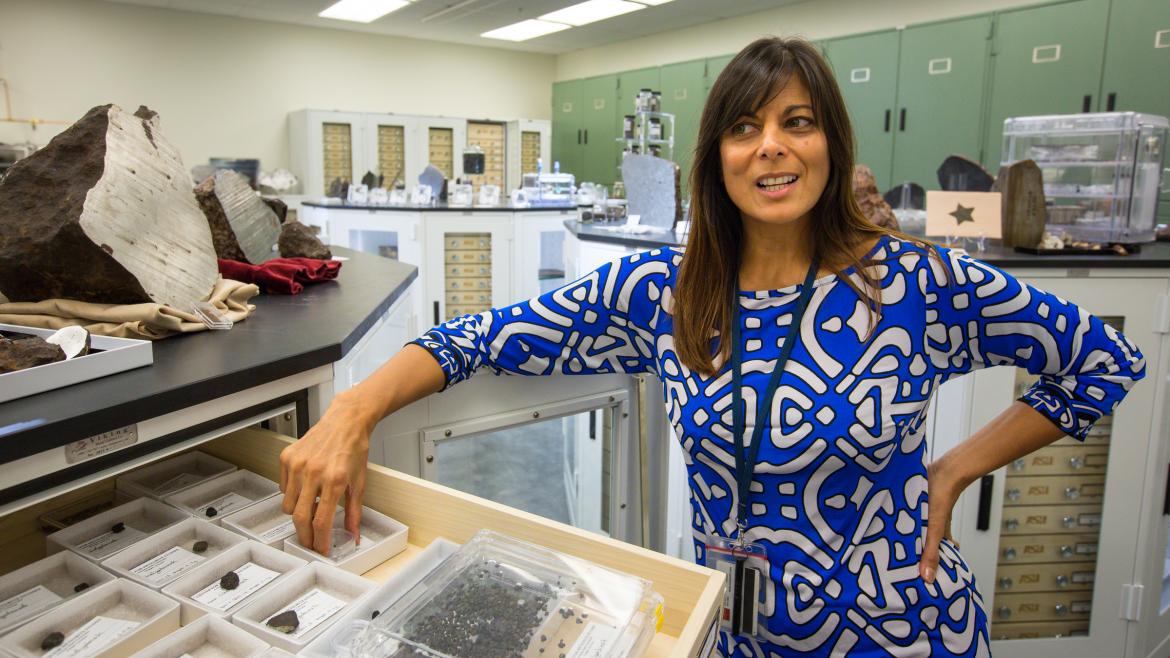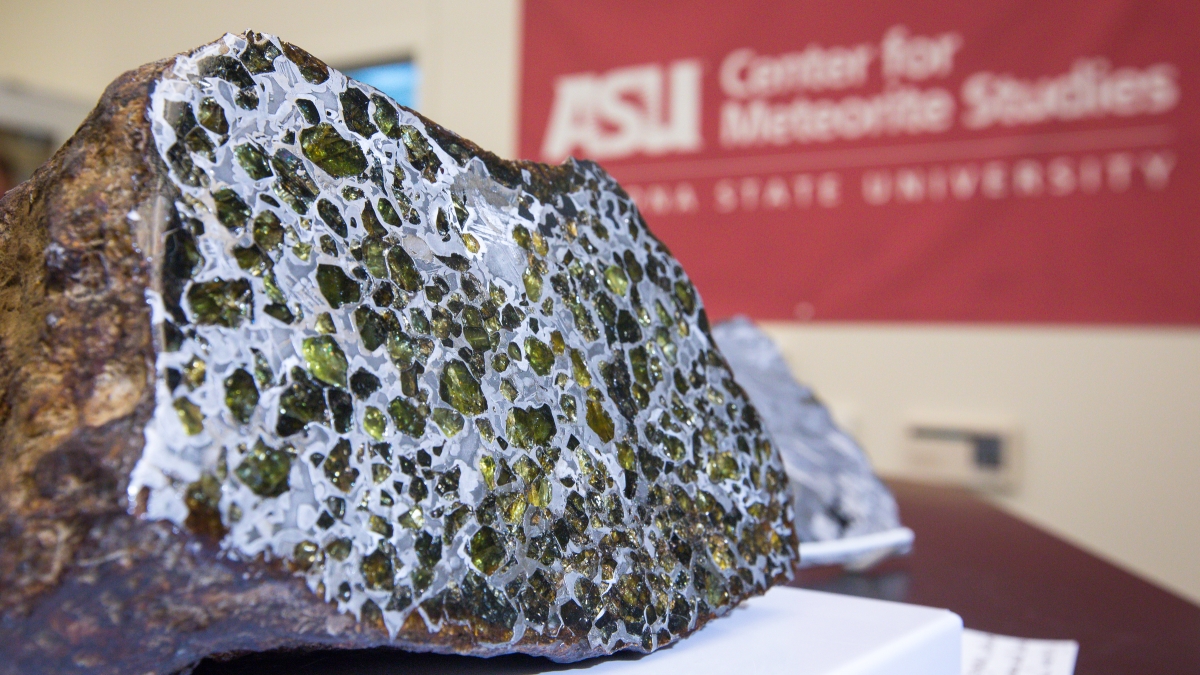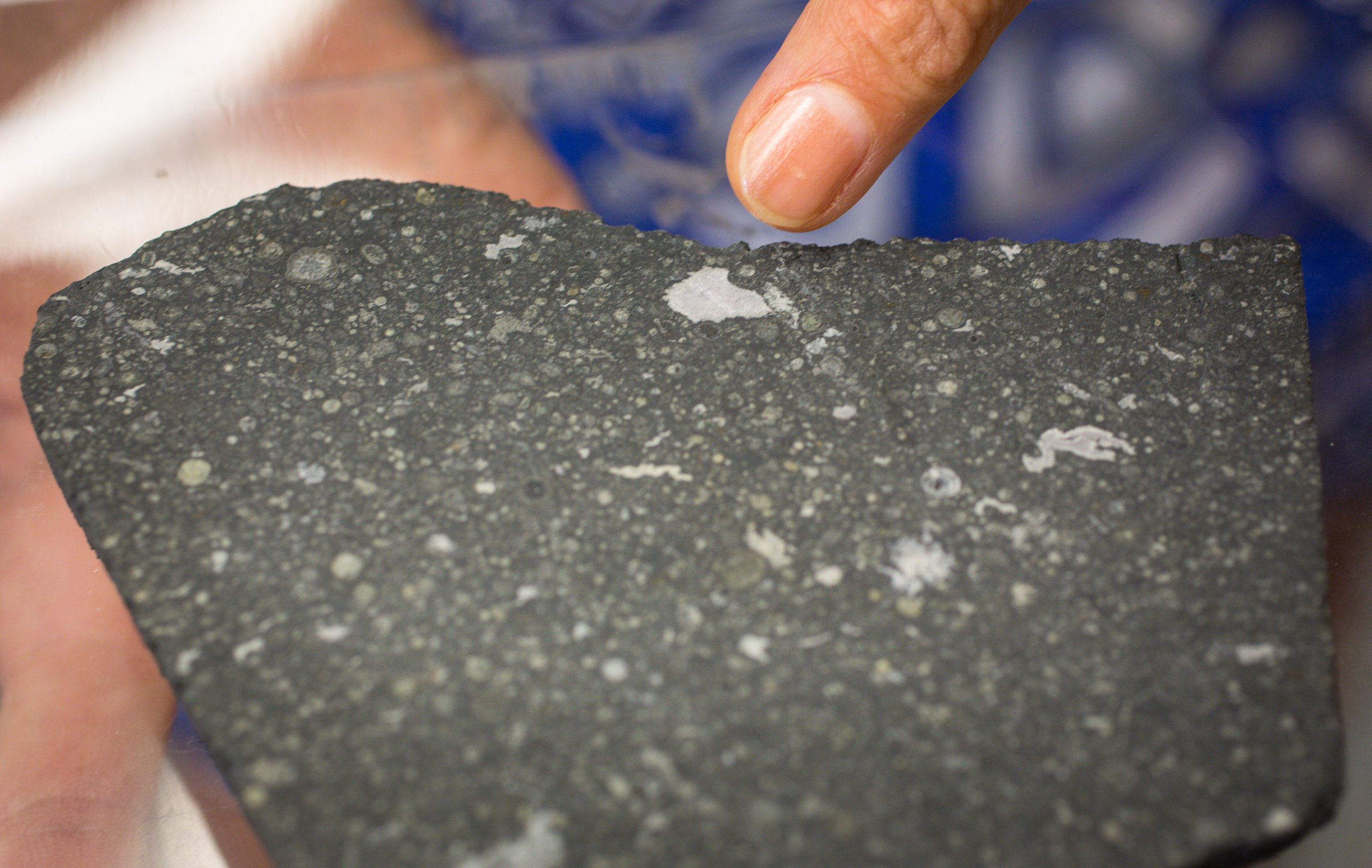The breathtaking possibility that they may have found an object that fell to Earth from millions of miles out in space will draw hundreds to the one-day-only meteorite-identification event at Arizona State University’s Earth and Space Exploration Day next month.
The crushing probability that it isn’t will be mollified by the opportunity to view the Meteorite Gallery’s spectacular collection at the annual event on Saturday, Nov. 7.
“Usually one or two turn out to be meteorites,” said Meenakshi Wadhwa, director of the Center for Meteorite Studies. “The probability that any one of them is a meteorite is pretty small.”
Her office voicemail states that the center does not identify potential meteorites on a regular basis.
Despite that, “I still get one or two messages every day asking if they can bring one in,” said Wadhwa, who is also a professor in ASU’s School of Earth and Space ExplorationThe School of Earth and Space Exploration is part of the College of Liberal Arts and Sciences..
The meteorite identification program was suspended five years ago because the center was swamped by requests.
“Most people don’t know what a meteorite is,” said research professor Laurence Garvie, collections manager of the Center for Meteorite Studies. “Not every heavy dark magnetic rock in the desert is a meteorite. It has to be slightly different in a particular kind of way. That’s the thing.”

Meenakshi Wadhwa, director of ASU's Center for Meteorite Studies, shows some of the hundreds of small stones from the Chelyabinsk meteorite that exploded over Russia on Feb. 15, 2013.
Photos by Charlie Leight/ASU Now
The desert Southwest is one of the better places to find meteorites because there’s not as much vegetation.
Meteorites fall into two categories: finds and falls. Both are named after where they were found, like Coolidge or Rancho Gomelia or Mayday.
A find is discovered on the ground. A fall is witnessed plummeting to Earth and then retrieved. Falls are much sexier in the meteorite world. The authoritative Meteoritical Bulletin carefully describes the circumstances of the discovery, noting such details as terrified cats and barns full of dust.
Meteorites can be tiny. The center possesses close to a kilogram of the famous Chelyabinsk meteorite, which was recorded by hundreds of cameras as it crashed into the Russian city on Feb. 15, 2013. That meteorite was the size of a Volkswagen bus. Before it shattered in the atmosphere, damaging more than 7,000 buildings and injuring more than 1,500 people, it weighed about 10,000 tons and traveled about 41,000 miles per hour.
“These things are continually hitting the Earth,” Wadhwa said. Fifty to 100 tons hit Earth every day.
Most are dust-size particles. “Meteor showers are not going to drop stuff,” Garvie said.
The center also owns a piece of broken window glass from Chelyabinsk. In the meteorite world, owning a piece of collateral damage as well as the meteorite itself is highly prized.
Meenakshi Wadhwa of the Center for Meteorite Studies displays a piece of the Allende meteorite, found in Mexico in 1969. She said the white sections are made of some of the oldest elements in the universe, dating back 4.56 billion years. The ASU center has about 2,000 different types of meteorites in its 40,000-specimen collection; it is the largest university-based collection in the world.
A 26-pound meteorite fell on Oct. 9, 1992, hitting the trunk of 18-year-old Michelle Knapp’s red 1980 Chevy Malibu in Peekskill, New York. The meteorite was still warm and smelling of sulfur when Knapp went out in the driveway to see what had happened. She sold the car — which she had just bought for $300 — to a meteorite collector’s wife for $10,000 and the meteorite for $69,000. The car has since traveled the world to museums and mineral shows.
Garvie pointed out there is not a black market in meteorites. “That’s a misconception,” he said.
When Wadhwa was curator at the Field Museum in Chicago, a meteorite shower hit the city. People called the police, thinking vandals were throwing rocks at their houses. The police confiscated many of the meteorites. “At the police station they were lined up like suspects,” she said.
Garvie holds out a specimen from Mars that was discovered in Morocco. Martian meteorites are the only materials from other planets ever recovered by humans. The ASU center has about 2,000 different types of meteorites in its 40,000-specimen collection; it’s the world’s largest university-based collection.
“We can learn a lot about planetary processes from them,” Wadhwa said. “That’s the core of a small planet you’re looking at there.”
“Let’s hope we get a meteorite this year,” she added.
Earth and Space Exploration Day
What: This annual event offers special science-related activities for students age 5 and up, families, educators and anyone interested in exploring Earth and space. In addition to the meteorite-identification event, there will be 3-D astronomy shows; special talks on volcanoes, earthquakes and planetary science; and interactive displays in the Gallery of Scientific Exploration. Visitors can also see a replica of the Curiosity Mars rover, explore "A" Mountain (Tempe Butte) on a guided field trip, bring rock samples for Dr. Rock to examine, and much more.
When: 9 a.m.-3 p.m. Saturday, Nov. 7.
Where: Interdisciplinary Science and Technology Building IV (ISTB 4) on Arizona State University’s Tempe campus. Find an interactive campus map here.
Admission: Free. Parking will be free as well.
Details: http://sese.asu.edu/earth-and-space-exploration-day. To register for the event, visit https://nasa.asu.edu/ESE-Day-Registration?destination=ESE-Day-Registration.
More Science and technology

ASU-led space telescope is ready to fly
The Star Planet Activity Research CubeSat, or SPARCS, a small space telescope that will monitor the flares and sunspot activity of low-mass stars, has now passed its pre-shipment review by NASA.…

ASU at the heart of the state's revitalized microelectronics industry
A stronger local economy, more reliable technology, and a future where our computers and devices do the impossible: that’s the transformation ASU is driving through its microelectronics research…

Breakthrough copper alloy achieves unprecedented high-temperature performance
A team of researchers from Arizona State University, the U.S. Army Research Laboratory, Lehigh University and Louisiana State University has developed a groundbreaking high-temperature copper alloy…



